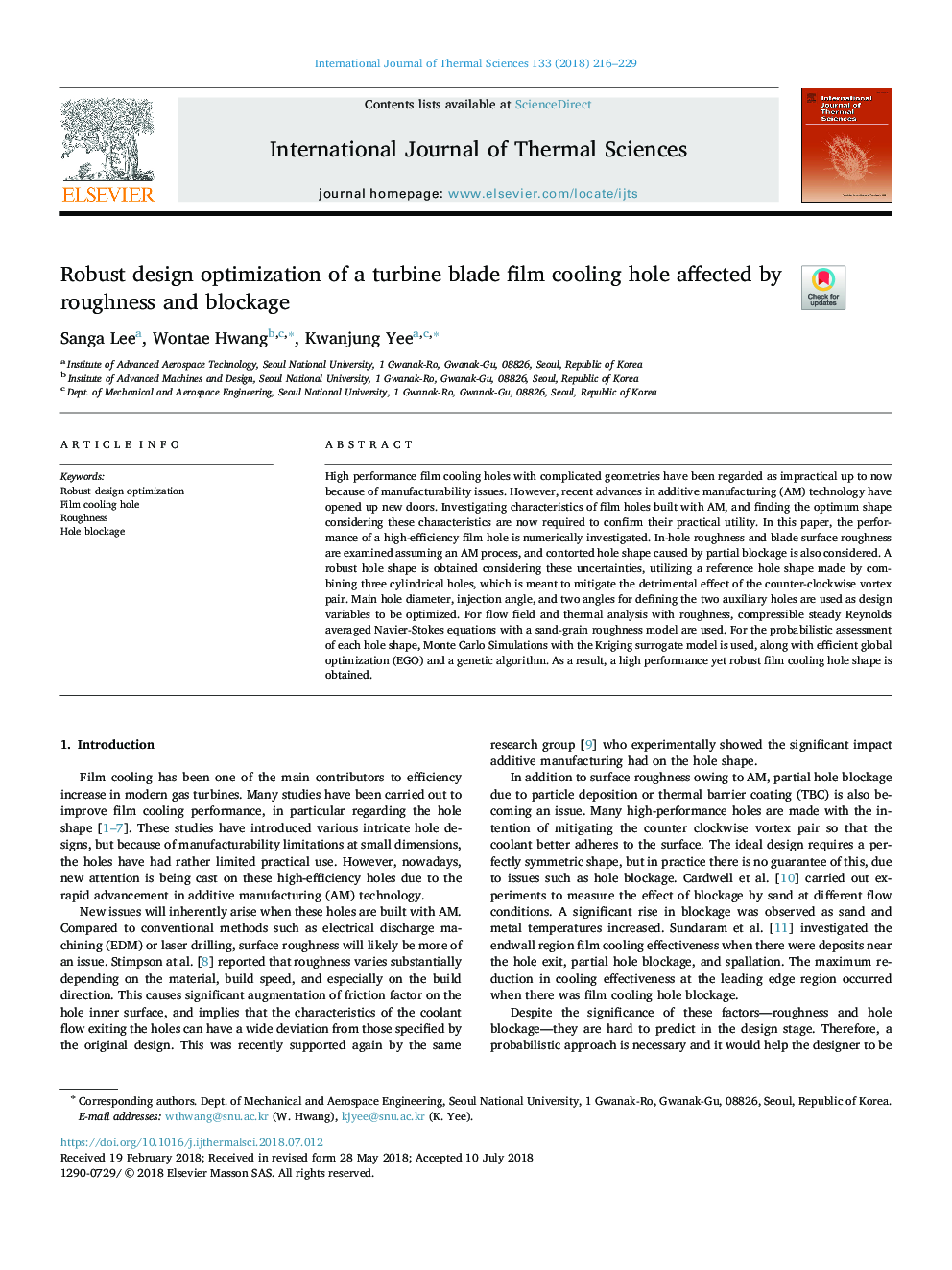| Article ID | Journal | Published Year | Pages | File Type |
|---|---|---|---|---|
| 7060548 | International Journal of Thermal Sciences | 2018 | 14 Pages |
Abstract
High performance film cooling holes with complicated geometries have been regarded as impractical up to now because of manufacturability issues. However, recent advances in additive manufacturing (AM) technology have opened up new doors. Investigating characteristics of film holes built with AM, and finding the optimum shape considering these characteristics are now required to confirm their practical utility. In this paper, the performance of a high-efficiency film hole is numerically investigated. In-hole roughness and blade surface roughness are examined assuming an AM process, and contorted hole shape caused by partial blockage is also considered. A robust hole shape is obtained considering these uncertainties, utilizing a reference hole shape made by combining three cylindrical holes, which is meant to mitigate the detrimental effect of the counter-clockwise vortex pair. Main hole diameter, injection angle, and two angles for defining the two auxiliary holes are used as design variables to be optimized. For flow field and thermal analysis with roughness, compressible steady Reynolds averaged Navier-Stokes equations with a sand-grain roughness model are used. For the probabilistic assessment of each hole shape, Monte Carlo Simulations with the Kriging surrogate model is used, along with efficient global optimization (EGO) and a genetic algorithm. As a result, a high performance yet robust film cooling hole shape is obtained.
Related Topics
Physical Sciences and Engineering
Chemical Engineering
Fluid Flow and Transfer Processes
Authors
Sanga Lee, Wontae Hwang, Kwanjung Yee,
